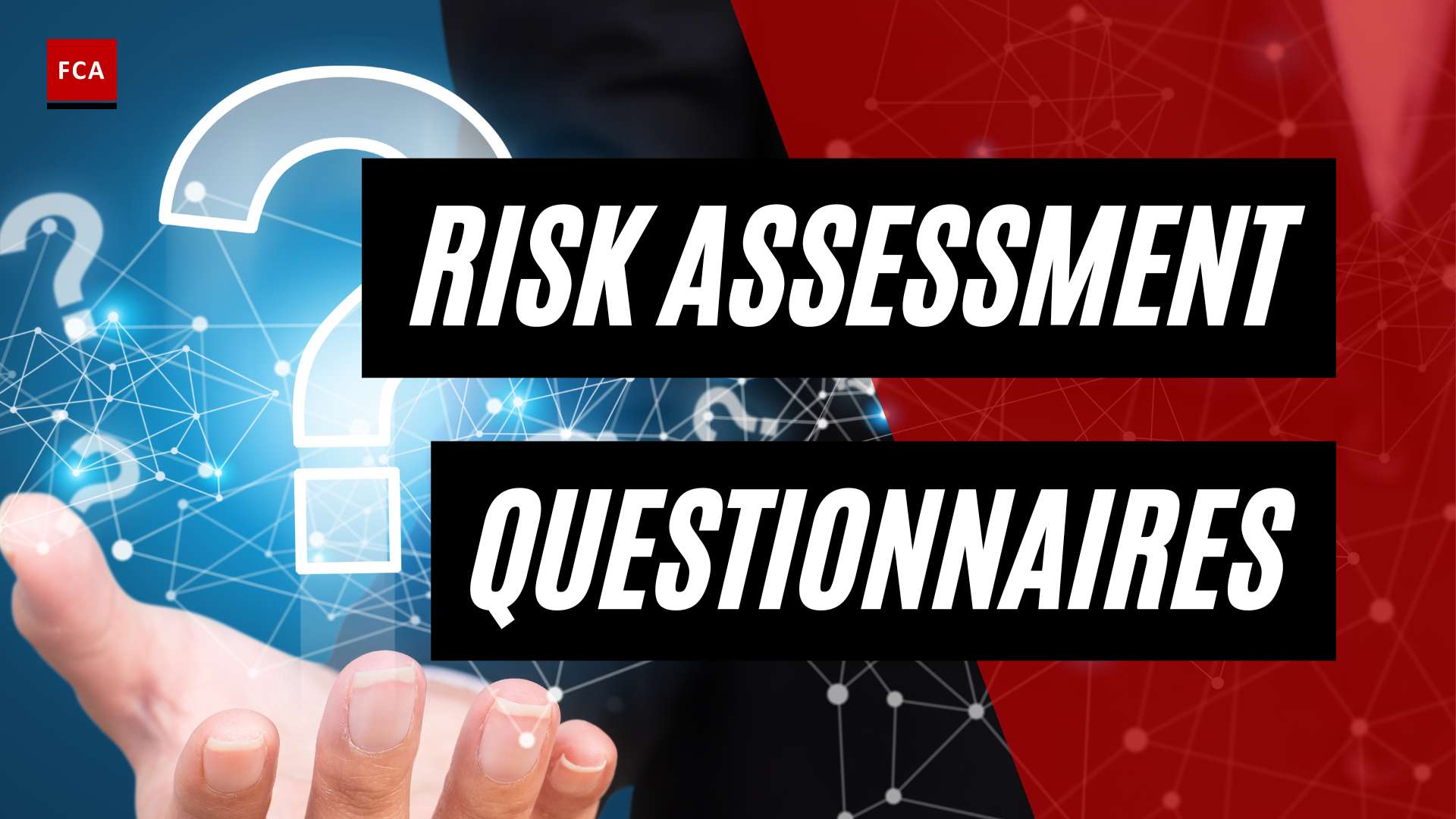Assessing the Effectiveness of AML Training
Effective Anti-Money Laundering (AML) training is crucial for financial institutions to combat the ever-evolving landscape of financial crimes. To ensure that AML training programs deliver the desired outcomes, it is essential to assess their effectiveness through rigorous evaluation methods. This section discusses the importance of AML training evaluation and explores various methods used to evaluate the effectiveness of AML training.
Importance of AML Training Evaluation
Evaluating the effectiveness of AML training programs is vital for several reasons. Firstly, it helps financial institutions measure the impact and value of their investment in training initiatives. By assessing the effectiveness of AML training, institutions can ensure that their resources are being utilized optimally, and the training is delivering the intended outcomes.
Additionally, evaluating AML training provides an opportunity to identify areas for improvement and refine training strategies. It allows organizations to identify gaps in knowledge, highlight potential weaknesses, and tailor future training programs accordingly. Regular evaluation and refinement contribute to maintaining a robust and up-to-date AML compliance framework.
Methods for Evaluating AML Training Effectiveness
Several methods can be employed to evaluate the effectiveness of AML training programs. These methods provide valuable insights into the impact of the training on participants’ knowledge, skills, and ability to apply AML principles effectively. Some common evaluation methods include:
Pre- and Post-Training Testing
Conducting pre- and post-training assessments is an effective way to measure the knowledge gained through AML training. By comparing participants’ performance before and after the training, organizations can gauge the effectiveness of the program in improving their understanding of AML regulations, detection techniques, and reporting obligations.
Certifications and Qualifications
Evaluating AML training effectiveness can also involve assessing participants’ attainment of certifications and qualifications. Achieving recognized certifications, such as the Certified Anti-Money Laundering Specialist (CAMS) designation, demonstrates a level of expertise in AML practices and principles. Tracking the number of certified professionals within an organization provides insights into the impact of training and the overall competence of the workforce.
Analysis of Transaction Monitoring Systems
Monitoring the performance of transaction monitoring systems can provide valuable insights into the effectiveness of AML training. By analyzing the number of alerts generated, the accuracy of alerts, and the ability to detect suspicious transactions, organizations can assess the impact of training on the detection and prevention of money laundering activities.
These evaluation methods, when used in combination, offer a comprehensive analysis of the effectiveness of AML training programs. It is essential for organizations to select the evaluation methods that align with their specific training goals and desired outcomes.
By regularly assessing the effectiveness of AML training, financial institutions can enhance their compliance programs, improve staff knowledge and skills, and strengthen their ability to prevent financial crimes. The insights gained through evaluation allow organizations to adapt their training strategies, address specific risk areas, and ensure ongoing regulatory compliance within the financial sector.
For case studies and experiences that highlight the impact of AML training evaluation, continue reading our article on Case Studies on AML Training Effectiveness.
Factors Influencing AML Training Effectiveness
To ensure the effectiveness of Anti-Money Laundering (AML) training programs, several factors come into play. These factors contribute to the overall success of the training and its impact on preventing financial crimes. In this section, we will explore three key factors that influence the effectiveness of AML training: scenario-based learning, tailored training programs, and continuous monitoring and evaluation.
Scenario-Based Learning
The use of scenario-based learning in AML training programs has proven to be highly effective in improving the detection and prevention of money laundering activities. By presenting real-life scenarios and case studies, employees are able to apply their knowledge and skills in a practical context. This type of interactive learning engages participants, enhances critical thinking, and helps them recognize suspicious activities and make appropriate reports (Financial Crime Academy; ACAMS Today).
Scenario-based exercises allow employees to develop a deeper understanding of AML regulations, risk assessment, and the importance of compliance. They also provide an opportunity to identify any knowledge gaps and address them through targeted training interventions. By simulating real-world situations, AML training can better prepare employees to identify and respond to potential money laundering activities.
Tailored Training Programs
Generic training programs may not effectively address the specific risk areas and compliance challenges faced by each financial institution. Tailoring AML training programs to the unique needs of an organization can significantly enhance their effectiveness. A case study revealed that customized training programs, designed to address specific risk areas and compliance requirements, yielded higher effectiveness rates in preventing financial crimes (Financial Crime Academy).
Tailored training programs consider the organization’s size, structure, geographic locations, and specific regulatory obligations. By addressing these factors, employees gain a better understanding of how AML regulations apply to their roles and responsibilities. This customization ensures that training content is relevant, engaging, and directly applicable to the organization’s specific AML challenges.
Continuous Monitoring and Evaluation
To maintain the effectiveness of AML training initiatives, continuous monitoring and evaluation are essential. Regularly assessing the impact and outcomes of training programs helps identify areas for improvement and ensures ongoing regulatory compliance within the financial sector.
Monitoring and evaluation can take various forms, including post-training assessments, evaluations of employee performance, and analysis of transaction monitoring systems. Pre- and post-training testing can measure the knowledge gained and identify areas that require additional focus. Certifications and qualifications obtained through training programs serve as tangible evidence of employee competence (ACAMS Today; Financial Crime Academy).
Analyzing transaction monitoring systems provides insights into the effectiveness of the training in identifying suspicious activities and generating accurate alerts. This ongoing evaluation enables organizations to identify any deficiencies in their AML training programs and make necessary improvements to ensure their effectiveness.
By incorporating scenario-based learning, tailored training programs, and continuous monitoring and evaluation, organizations can enhance the effectiveness of their AML training efforts. These factors contribute to a well-rounded and comprehensive training program that equips employees with the knowledge and skills needed to combat money laundering and protect the integrity of the financial system.
Metrics for AML Training Effectiveness Analysis
To assess the effectiveness of Anti-Money Laundering (AML) training, organizations utilize various metrics that provide insights into the impact and outcomes of their training programs. These metrics assist in evaluating the knowledge, skills, and proficiency gained by employees in detecting and preventing money laundering activities. Some key metrics used for AML training effectiveness analysis include pre- and post-training testing, certifications and qualifications, and analysis of transaction monitoring systems.
Pre- and Post-Training Testing
One effective method to measure the effectiveness of AML training is through pre- and post-training testing. Before the training program, employees complete a baseline assessment to gauge their existing knowledge and awareness of AML regulations and practices. Following the training, the same assessment is administered to assess the knowledge gained and improvements made.
By comparing the results of the pre- and post-training tests, organizations can quantify the learning outcomes and identify areas of strength and areas that may require further attention. This metric provides valuable insights into the effectiveness of the training program and helps organizations tailor future training initiatives to address specific knowledge gaps.
Certifications and Qualifications
Certifications and qualifications obtained by employees serve as tangible evidence of their competence and understanding of AML regulations and best practices. These certifications validate the successful completion of specialized AML training programs and demonstrate a commitment to maintaining high standards of compliance.
Organizations can track the number of employees who have obtained relevant certifications and qualifications as a metric for assessing the effectiveness of their AML training initiatives. This metric reflects the level of expertise within the organization and indicates the extent to which employees have acquired the necessary skills to combat money laundering.
Analysis of Transaction Monitoring Systems
Transaction monitoring is a critical component of AML efforts, and the effectiveness of AML training can be evaluated by analyzing the performance of transaction monitoring systems. By monitoring the number of suspicious transactions identified and reported by employees, organizations can assess the practical application of AML training.
A successful AML training program should empower employees to recognize red flags and report suspicious activities accurately. Analyzing the number of suspicious transactions identified and reported can provide insights into the effectiveness of the training program in equipping employees with the necessary skills to detect and prevent money laundering.
These metrics, including pre- and post-training testing, certifications and qualifications, and analysis of transaction monitoring systems, are essential in evaluating the effectiveness of AML training programs. Organizations can leverage these metrics to identify areas for improvement, measure the impact of training initiatives, and ensure ongoing compliance with AML regulations.
For more information on assessing the effectiveness of AML training and additional metrics used in evaluation, refer to our article on AML training evaluation metrics.
Best Practices for AML Training Evaluation
To ensure the effectiveness of Anti-Money Laundering (AML) training, financial institutions and organizations should follow best practices for evaluation. By implementing these practices, they can gauge the impact of their training programs, identify areas for improvement, and strengthen their overall AML compliance efforts.
Engaging Frontline Employees
Involving frontline employees in the evaluation process is crucial, as they are the ones with direct exposure to potentially suspicious activities and transactions in their roles. Their active participation and feedback provide valuable insights into the effectiveness of the training programs. Conducting surveys, focus groups, or individual interviews can help gather their perspectives and identify any knowledge gaps or areas where additional training may be required (ACAMS Today).
Regular Training Sessions and Assessments
Regular training sessions and assessments are key to maintaining a high level of AML awareness and knowledge among employees. Financial institutions that have implemented frequent training sessions and assessments have reported a notable decrease in compliance violations and an increase in staff awareness and knowledge related to anti-money laundering practices (Financial Crime Academy).
These training sessions should cover both foundational AML concepts and emerging trends in financial crime. By providing ongoing education and refreshers, organizations can reinforce the importance of AML compliance and equip employees with the latest knowledge and skills necessary to identify and report suspicious activities.
Customizing Training to Risk Areas
Tailoring AML training programs to address specific risk areas and compliance challenges faced by each financial institution is a crucial best practice. A one-size-fits-all approach may not effectively address the unique risks and vulnerabilities of an organization. By customizing the training content and exercises to focus on the specific risks faced, organizations can enhance the relevance and impact of their AML training programs.
Identifying high-risk areas within the organization, such as particular business lines or geographical regions, allows for targeted training to address those specific risks. This approach ensures that employees receive training that is directly applicable to their roles and helps them understand how to mitigate risks effectively. A case study revealed that tailored AML training programs yielded higher effectiveness rates in preventing financial crimes (Financial Crime Academy).
By implementing these best practices, organizations can evaluate the effectiveness of their AML training programs more comprehensively. Engaging frontline employees, conducting regular training sessions and assessments, and customizing training to risk areas contribute to building a strong AML compliance culture and equipping employees with the necessary knowledge and skills to detect and prevent money laundering activities.
Case Studies on AML Training Effectiveness
To gain a deeper understanding of the impact of AML training effectiveness, it is valuable to examine real-world case studies and experiences. These success stories shed light on the positive outcomes achieved through comprehensive AML training programs. Additionally, evaluating the International Monetary Fund’s (IMF) AML training initiatives provides insights into the effectiveness and global reach of such programs.
Success Stories and Experiences
Professionals working in the field of anti-money laundering have shared success stories and experiences that highlight the importance of effective AML training programs. Angela Salter and Hennie Verbeek-Kusters are two notable examples of individuals who have made significant contributions to the anti-money laundering sector. Their stories emphasize the value of engagement, listening, and identifying one’s potential in combating financial crimes (ACAMS Today).
These success stories demonstrate the power of AML training in developing expertise and fostering a strong culture of compliance. By sharing experiences and lessons learned, professionals inspire others to strive for excellence in their anti-money laundering efforts.
Evaluating IMF’s AML Training Programs
The IMF has been actively conducting AML training programs for national authorities for over a decade. An evaluation of these programs provides insights into their effectiveness and impact on strengthening anti-money laundering capabilities on a global scale (IMF).
The evaluation, which included assessments from over 600 national authorities worldwide, revealed positive feedback regarding the IMF’s AML training programs. Approximately half of the surveyed authorities rated the programs as excellent or good. The majority of respondents expressed that the training programs were useful in enhancing their AML capabilities.
The study highlighted the strategic focus and practical nature of the IMF’s AML training programs, which were highly appreciated by the surveyed national authorities. This underscores the significance of tailored and relevant training content for effective capacity building in the field of anti-money laundering.
By evaluating the IMF’s AML training programs, it becomes evident that these initiatives have a positive impact on enhancing the anti-money laundering capabilities of national authorities across the globe. The positive feedback received from the surveyed authorities underscores the value and effectiveness of these programs in combating financial crimes.
These case studies and evaluations collectively demonstrate the importance of investing in comprehensive and tailored AML training programs. By leveraging success stories and evaluating established training initiatives, organizations can gain insights and inspiration to develop and enhance their own AML training strategies.
Challenges in AML Training Effectiveness
To ensure the effectiveness of Anti-Money Laundering (AML) training programs, it is crucial to address various challenges that can hinder the learning experience and impact. In the context of AML training effectiveness, three key challenges are repetitive and generic training material, lack of employee engagement, and adapting to virtual training environments.
Repetitive and Generic Training Material
One of the common challenges faced in AML training is the use of repetitive and generic training material. When employees encounter the same content repeatedly, they may become disengaged and fail to absorb the information effectively. To overcome this challenge, organizations should focus on implementing interactive and engaging training methods. This can include incorporating real-life scenarios, case studies, and interactive exercises that encourage active participation and critical thinking. By making the training more dynamic and tailored to the specific needs of the employees, organizations can enhance the effectiveness of AML training programs.
Lack of Employee Engagement
Another challenge that affects the effectiveness of AML training is the lack of employee engagement. If employees are not fully engaged in the training process, it can lead to reduced comprehension and retention of AML concepts and best practices. To address this challenge, organizations should strive to create a training environment that encourages active participation and involvement. This can be achieved through various means such as gamification, quizzes, group discussions, and role-playing exercises. By fostering a sense of participation and making the training sessions more interactive, organizations can enhance employee engagement and improve the effectiveness of AML training.
Adapting to Virtual Training Environments
The COVID-19 pandemic has necessitated a shift towards virtual training environments, presenting a unique challenge for AML training effectiveness. Financial institutions and organizations must adapt their training methods to suit remote work environments while ensuring that the training remains engaging, informative, and comprehensive. This challenge can be addressed by leveraging technology to create interactive virtual training sessions, utilizing video conferencing tools, and providing access to online resources and materials. Additionally, organizations should consider incorporating virtual collaboration platforms to facilitate discussions and foster a sense of community among trainees. By embracing technology and adapting training methodologies to virtual environments, organizations can ensure that AML training remains effective and impactful.
In order to address these challenges and enhance the effectiveness of AML training, organizations should continuously evaluate and update their training programs. By identifying areas for improvement and incorporating feedback from employees, organizations can create targeted and impactful training initiatives that effectively educate employees on AML concepts, best practices, and regulatory requirements. By doing so, organizations can strengthen their compliance efforts and contribute to the overall fight against money laundering activities.
Future Trends in AML Training Evaluation
As the financial crime landscape continues to evolve, assessing the effectiveness of AML training becomes increasingly crucial for organizations to stay ahead of illicit activities. To adapt to these changes, the future of AML training evaluation will be characterized by three significant trends: understanding the evolving financial crime landscape, customization for specific risks, and the implementation of interactive and engaging training methods.
Evolving Financial Crime Landscape
Financial crimes are becoming more sophisticated, requiring financial institutions to continually update their AML training programs. A major concern for many institutions is that their existing training programs may not effectively combat the increasing sophistication of financial crimes (KYC Hub). To address this, organizations must ensure that their AML training aligns with the latest trends and emerging risks in the financial crime landscape. By regularly updating training content and incorporating real-world examples, institutions can equip their employees with the knowledge and skills needed to identify and mitigate evolving risks.
Customization for Specific Risks
A survey revealed that 47% of financial institutions believe their AML training is not fully aligned with their specific risks (KYC Hub). Customizing AML training to the institution’s unique risk profile is crucial for effective training and compliance efforts. By analyzing internal and external risk factors, organizations can tailor their training programs to address the specific money laundering threats they face. This customization ensures that employees receive targeted training that aligns with the institution’s risk appetite and regulatory requirements.
Interactive and Engaging Training Methods
The lack of engagement from employees due to repetitive and generic AML training material can hinder the effectiveness of AML training programs (KYC Hub). To overcome this challenge, financial institutions must implement interactive and engaging training methods. These methods can include scenario-based simulations, gamification, and interactive quizzes. By making the training experience more interactive and immersive, organizations can increase employee involvement and understanding of AML concepts and best practices. Interactive training methods not only enhance learning outcomes but also help employees apply their knowledge effectively in real-world situations.
By embracing these future trends in AML training evaluation, organizations can ensure that their training programs remain effective and relevant in combating financial crimes. Understanding the evolving financial crime landscape, customizing training for specific risks, and implementing interactive and engaging training methods will empower employees with the knowledge and skills necessary to detect and prevent money laundering activities effectively. As the AML landscape continues to evolve, ongoing evaluation and enhancement of training programs will be essential for organizations to protect themselves and maintain regulatory compliance.








